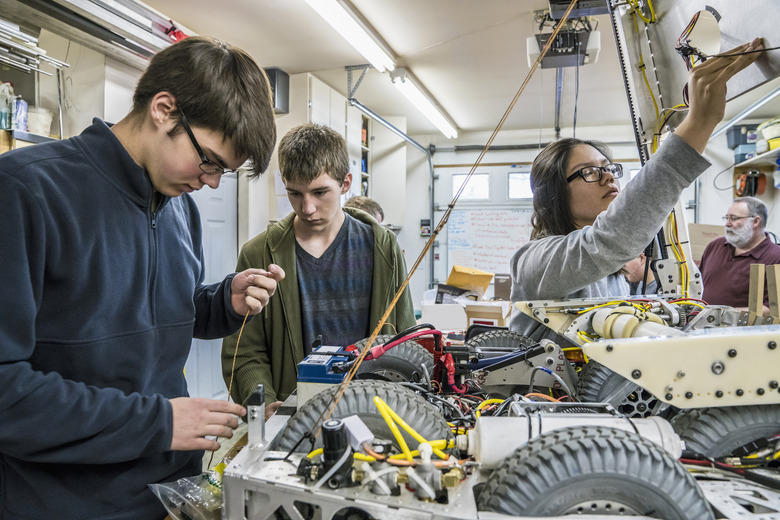Types Of Newton Scooters
Newton scooters, or Newton cars, are demonstrations of Newton's third law of motion, also known as the law of interaction. The principle behind this law is that for each action, there is an equal and opposite reaction. Newton scooters come in a few varieties. They can be flatbed or have wheels; they can throw something massive to propel themselves, or expel something light.
Third Law Application
Third Law Application
The way Newton scooters propel themselves forward is by pushing off of something. However, instead of pushing off of something immobile, like a wall, they push off of something heavy that they carry onboard. By Newton's third law, the force with which the weight is pushed off the scooter equals the force that the weight pushes on the car, thus propelling it forward.
Weight Launched by Rubber Band
Weight Launched by Rubber Band
One type of Newton scooter launches a weighted object with a stretched rubber band. When released, the rubber band would push the weighted object off the back end of the scooter. Alternately, the scooter would effectively push off the object, propelling itself forward.
Ramp
Ramp
Another type of Newton scooter has a ramp facing the back. A heavy ball is rolled down the ramp, which flattens at the bottom to level the ball's trajectory and translate the ball's vertical descent into horizontal velocity. The gravitational force on the ball presses laterally on the ramp, forcing the scooter forward. Again, the heavier the ball, the faster forward the cart will go.
Balloon
Balloon
Another variation is a balloon attached to a small cart. The air valve is pointed to the back of the scooter. Instead of ejecting a massive object, it ejects air, so it doesn't propel forward as explosively as the above methods. However, such scooters propel forward longer, thus exhibiting more endurance.
Types of Track
Types of Track
The Newton scooter can move forward on four wheels like a regular car. Or it can be propelled forward over a track of rolling objects, if the scooter is flat on the underside. This track can be made up of pencils laid perpendicular to the direction of motion of the scooter. Another option is a track of straws that aren't flexible. (The bulge where the straws are flexible keeps them from lying perfectly flat, preventing the scooter from staying straight on the track.)
Cite This Article
MLA
Dohrman, Paul. "Types Of Newton Scooters" sciencing.com, https://www.sciencing.com/types-newton-scooters-5652276/. 16 November 2009.
APA
Dohrman, Paul. (2009, November 16). Types Of Newton Scooters. sciencing.com. Retrieved from https://www.sciencing.com/types-newton-scooters-5652276/
Chicago
Dohrman, Paul. Types Of Newton Scooters last modified March 24, 2022. https://www.sciencing.com/types-newton-scooters-5652276/
